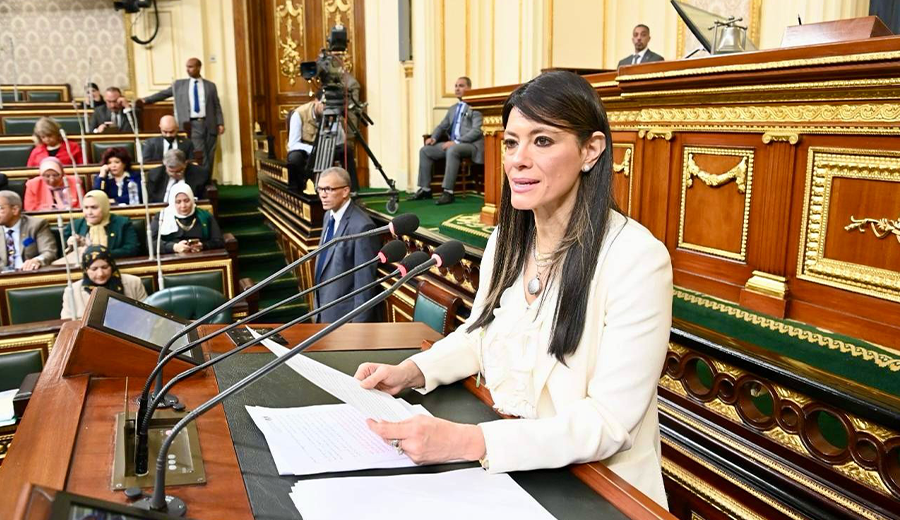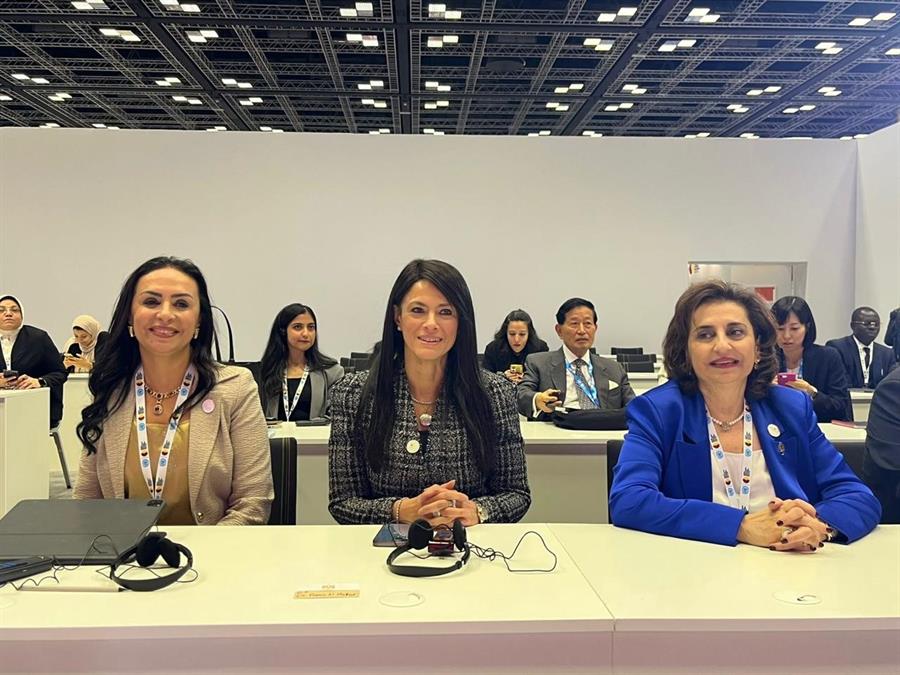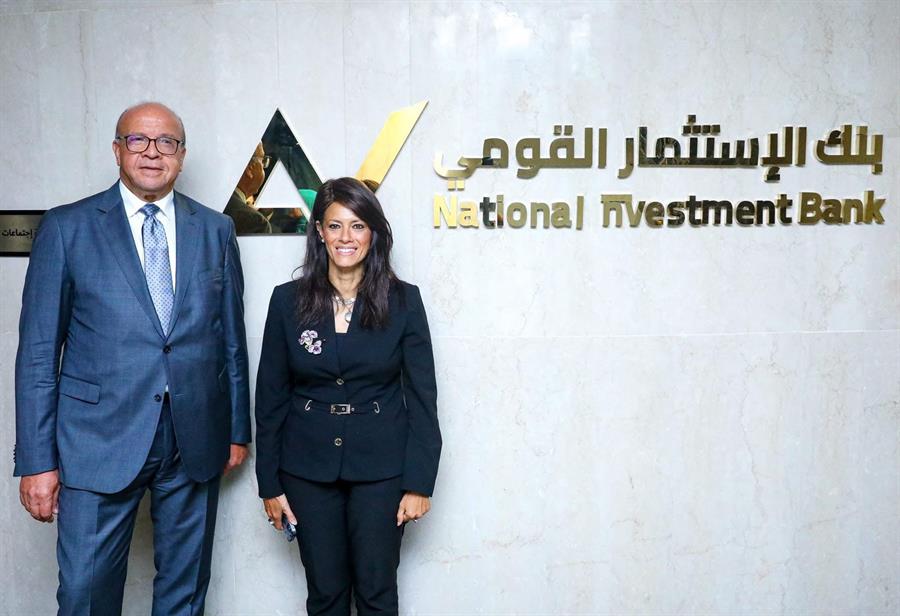H.E. Minister Rania A. Al-Mashat Outlines Key Targets for Egypt’s Manufacturing & Extractive Industries in FY 2025/2026 During House of Representatives Session

15 April 2025
EGP 27 billion in public investments for the manufacturing sector and EGP 25.8 billion for the extractive sector in the 2025/2026 plan.
The manufacturing sector contributes 16% to the Gross Domestic Product (GDP), 14% of total employment, and over 85% of Egypt's non-oil exports.
During the plenary session of the House of
Representatives chaired by Speaker H.E. Dr. Hanafy El-Gebaly, H.E. Dr. Rania A.
Al-Mashat, Minister of Planning, Economic Development, and International
Cooperation, presented the main targets of Egypt’s economic and social
development plan for FY 2025/2026—marking the first year of the Medium-Term
Development Plan (2025/2026–2028/2029). Her address focused on the strategic
objectives for both the manufacturing and extractive sectors, including
petroleum and natural gas.
H.E. Dr. Al-Mashat emphasized that the
industrial sector holds a central position in the government's structural
reform agenda, serving as a key driver of economic growth and transformational
change within Egypt’s production landscape. The sector benefits from high
value-added contributions and strong linkages with other industries,
positioning it to contribute no less than 16% to the national GDP.
The manufacturing sector also possesses a high
employment absorption capacity, currently providing over 4 million job
opportunities across small, medium, and large-scale projects—representing about
14% of the total workforce. In addition, the sector contributes over 85% of
Egypt’s total non-oil exports.
H.E. Dr. Al-Mashat noted that this focus on
the industrial sector aligns with Egypt Vision 2030, which regards
manufacturing as a leading pillar of economic growth. The FY 2025/2026 plan
allocates approximately EGP 27 billion in public investments to the sector,
with the majority implemented by public sector companies.
She outlined five core pillars of the
manufacturing development strategy. The first pillar focuses on deepening
domestic production of imported components that can be manufactured locally,
thereby creating investment opportunities for national companies and saving
foreign exchange. A national inventory of substitution projects is already
underway, based on current import lists and domestic manufacturing
capabilities.
The second pillar targets the completion and
upgrading of infrastructure in industrial zones. This includes finalizing
utility works at the Robeiki Leather City, enhancing infrastructure in
tourism-driven areas of Upper Egypt—specifically in Sohag and Qena—continuing
upgrades in other specialized industrial complexes, completing the
establishment of 17 industrial complexes across 15 governorates with over 5,000
ready-to-use units under usufruct, and finalizing two additional high-tech
industrial hubs along with the release of new land plots for private
investment.
The third pillar involves advancing
export-oriented manufacturing to serve promising international markets, with a
goal of increasing industrial exports by no less than 15% annually. The fourth
pillar emphasizes workforce development and improving product quality. This
includes enhancing vocational training efficiency, upgrading technical
university education outcomes, and modernizing industrial schools, vocational
training centers, and industrial apprenticeship facilities.
The fifth and final pillar prioritizes the
growth of environmentally friendly, green industries to ensure sustainable
development. These include the green hydrogen sector, manufacturing components
for solar power stations—such as panels and cells—constructing wastewater
treatment and seawater desalination plants, producing electric vehicles, and
manufacturing water- and energy-efficient devices.
Extractive Industries
Turning to extractive industries—namely
petroleum and natural gas—H.E. Dr. Al-Mashat highlighted their strategic
importance as key drivers of national economic growth and as primary sources
for meeting domestic energy demand. Despite global and regional disruptions
affecting energy markets, including unstable supply chains and geopolitical
tensions, Egypt aims to maintain sectoral growth at a modest 1.8% during the
plan year.
The FY 2025/2026 plan allocates around EGP
25.8 billion in public investments to the extractive sector. H.E. Dr. Al-Mashat
explained that the strategy seeks to ensure energy security by diversifying
import sources, entering forward contracts for price hedging, and expanding
refinery and petrochemical capacities.
The plan also aims to sustain confirmed
reserves of crude oil and natural gas, build strategic stockpiles for future
needs, and expand storage capacities. Additional targets include diversifying
the energy mix by increasing the share of renewable energy sources and
continuing Egypt’s transformation into a regional hub for trading natural
gas—both liquefied and conventional—as well as crude oil.
H.E. Dr. Al-Mashat further noted efforts to
attract increased foreign investment in the petroleum and gas sector. These
include launching new international bid rounds, developing new oil agreement
models and partnerships, and continuing to settle outstanding dues to foreign
partners. She also highlighted initiatives to expand private-sector
participation in refinery development, upgrade transport infrastructure, adopt
multi-modal logistics systems, improve distribution networks, and accelerate
the delivery of natural gas to both industrial and residential users.
Additionally, development and capacity expansion projects are ongoing at Egypt’s
two major liquefaction plants in Idku and Damietta to boost LNG export
capabilities.









